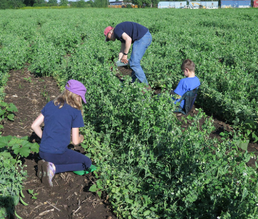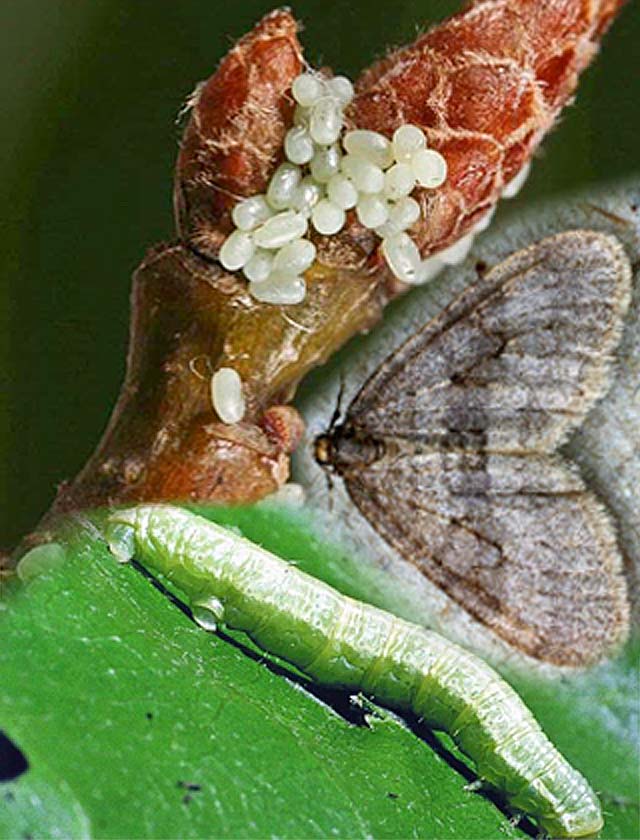The female of this species is virtually wingless and cannot fly, but the male is fully winged and flies strongly. Its wingspan is 28–33 mm with alternating pale buff and darker brown fascia on the forewings and a similar pattern, but much paler, on the hindwings. The adults are active at night throughout the winter from October to February. Males are attracted to light and females.
After mating, females lay their eggs in tree bark crevices or in other sheltered locations, and all adults die. The eggs hatch in the spring when temperatures average around 13°C (55°F). After hatching, the young larvae crawl up tree trunks and produce silken thread that can carry them in the wind to new areas. This dispersal method, called “ballooning,” is common among defoliators.
The caterpillars are green loopers with pale lines on the sides and a darker one along the top. They will feed on virtually any tree or shrub (see list below) and can be a serious pest in apple orchards. Generally, their feeding is completed by mid-June.



















